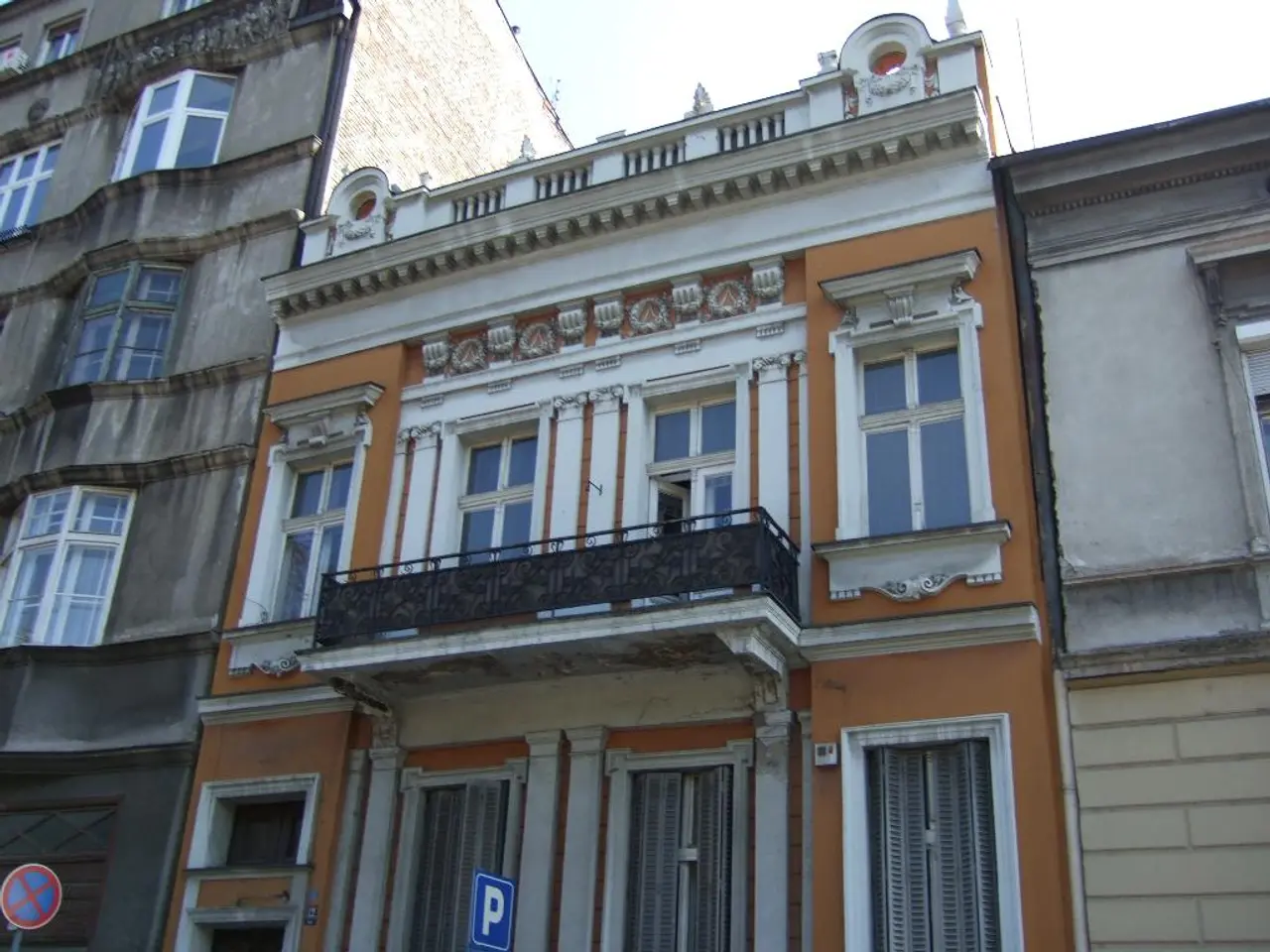Sustainable Architecture and Pilot Projects Discussed by CityChanger Birgit Rusten
The FutureBuilt programme, based in the Oslo region, is a pioneering initiative focused on innovative, climate-friendly architecture and urban development [1][3]. This sustainability initiative, co-founded by Birgit Rusten, aims to reduce greenhouse gas emissions, promote sustainable construction practices, and encourage reuse of urban spaces [1].
Launched in 2009, after starting within the National Association of Norwegian architects in 2003, FutureBuilt has been extended until 2030 [2]. The programme collaborates with architects, planners, and policymakers to implement practical and forward-thinking building projects that showcase environmental responsibility and innovation.
One of the completed projects under FutureBuilt is the Kringsjå student family houses, made out of wood and complying with plus energy standards. These houses are equipped with solar panels, greywater recycling, and local geothermal heating [1].
FutureBuilt's projects serve as contagiously inspiring examples and role models for others, pushing the boundaries of sustainable architecture [1]. However, some pilot projects aim to exceed the regulations of the city in terms of height and density, but may face challenges in obtaining approval from planning authorities [2].
The programme works with both private and public developers over a period of time, acting as a facilitator organization [2]. Birgit Rusten advises this approach, believing it helps to achieve the programme's ambitious criteria. However, developers have sometimes found it difficult to fulfil these criteria, resulting in buildings that are not as interesting or as good as initially hoped [2].
FutureBuilt's projects have partners such as the Norwegian Green Building Council and the Norwegian State Housing Bank [1]. The programme has completed 56 pilot projects as of February 2021 [1].
FutureBuilt has adopted fossil-free construction sites as a minimum criterion since 2017, aiming to achieve emission-free sites [1]. The team has also changed the process for accepting FutureBuilt projects, with candidates becoming preliminary FutureBuilt candidates before the formal agreement [1].
Looking ahead, FutureBuilt plans to focus on turning a harbour area in Oslo into a mixed-use area with a lot of housing, addressing overall structures contributing to a lack of sustainability [3]. The programme also plans to expand its focus, moving away from being energy, material, and mobility-focused, and including work with nature, water management, social sustainability, and circularity [3].
Birgit Rusten hopes for FutureBuilt to be a learning arena for cities everywhere, aiming to improve all construction businesses and city developments [3]. With its innovative projects and commitment to sustainability, FutureBuilt continues to pave the way for a greener and more sustainable Oslo.
[1] FutureBuilt. (n.d.). About FutureBuilt. Retrieved from https://www.futurebuilt.no/en/about/ [2] Rusten, B. (2021, February 11). The FutureBuilt Programme: Achieving Sustainable Urban Development. Retrieved from https://www.futurebuilt.no/en/news/the-futurebuilt-programme-achieving-sustainable-urban-development/ [3] Statsbygg. (n.d.). FutureBuilt. Retrieved from https://www.statsbygg.no/en/project/futurebuilt/
- The environmental-science and technology field of FutureBuilt, established in 2009, collaborates with various professionals to develop sustainable, data-and-cloud-computing efficient buildings that epitomize innovation and adherence to environmental standards.
- One such project, the Kringsjå student family houses, incorporates sustainable-living features like solar panels, greywater recycling, and local geothermal heating, demonstrating the programme's commitment to promoting climate-change awareness within home-and-garden spaces.
- In order to maintain the initiative's ambitious criteria, FutureBuilt works closely with both private and public developers over extended periods, acting as a facilitator to encourage sustainable life changes and the application of environmental-science principles.
- With a focus on Oslo's future, FutureBuilt plans to transform a harbor area into a mixed-use, sustainable living community, broadening their scope to encompass issues of nature, water management, social sustainability, and circularity, aiming to improve not only buildings but entire city developments.




